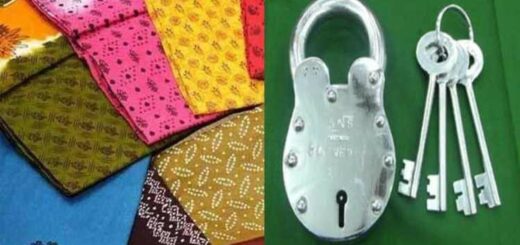National Current Affairs – UPSC/IAS Exams- 20th December 2019
Topic: Polity and Governance
In News: Police has imposed section 144 of the Criminal Procedure Code at various parts of the country Amid CAA bill protest.
More on the Topic:
- The history of this Section goes back to British Raj. Section 144 was used for the first time in 1861 by the British Raj, and thereafter became an important tool to stop all nationalist protests during the India’s Independence Struggle.
- Section 144 of the Criminal Procedure Code (CrPC) was enacted in the year 1973 in the Independent India. This law empowers the magistrate of any state or union territory in India to pass an order prohibiting the gathering of four or more people in a specified area
What the law states?
- The Section 144 of the Criminal Procedure Code (CrPC) prohibits any assembly of five or more people in an area where it has been imposed.
- According to the law, every member of such “unlawful assembly” can be booked for “engaging in rioting”. The maximum punishment for such act is three years.
- Moreover, obstructing police from breaking up an unlawful assembly is a punishable offence as well.
- The magistrate can direct any person to abstain from a certain act or to take a certain order with respect to certain property in his possession or under his management.
- This usually includes restrictions on movement, carrying arms and from assembling unlawfully.
- Section 144 would be valid only for a period of two months.
- State government can extent the validity for two months and maximum upto 6 months. It can be withdrawn at any point of time, if situation turns normal.
Concerns:
- It is too broad and the words of the section are wide enough to give absolute power to a magistrate that may be exercised unjustifiably. The immediate remedy against such an order is a revision application to the magistrate himself.
- An aggrieved individual can approach the High Court by filing a writ petition if his fundamental rights are at stake.
- However, fears exist that before the High Court intervenes, the rights could already have been infringed.
- Imposition of Section 144 to an entire state, as in UP, has also drawn criticism since the security situation differs from area to area.
- In the bid to legislate for all kinds of emergencies, Section 144 ends up conferring almost unbridled powers upon executive officers.
- The extreme breadth of powers conferred upon executive officers by Section 144 is not specifically tailored towards the kinds of dangers that are sought to be prevented.
Courts ruled on Section 144:
- The first major challenge to the law was made in 1961 in Babulal Parate vs State of Maharashtra and Others.
- A Bench of the Supreme Court refused to strike down the law, saying it is “not correct to say that the remedy of a person aggrieved by an order under the section was illusory”.
- It was challenged again by Dr Ram Manohar Lohiya in 1967 and was once again rejected, with the court saying “no democracy can exist if ‘public order’ is freely allowed to be disturbed by a section of the citizens”.
- In another challenge in 1970 (Madhu Limaye vs Sub-Divisional Magistrate), a seven-judge Bench headed by then CJI M Hidayatullah.
- It ruled that the power under Section 144 is not an ordinary power flowing from administration but a power used in a judicial manner and which can stand further judicial scrutiny”.
- The court, however, upheld the constitutionality of the law.
- It ruled that the restrictions imposed through Section 144 cannot be held to be violative of the right to freedom of speech and expression, which is a fundamental right because it falls under the “reasonable restrictions”.
Does Section 144 provide for communications blockades too?
- The rules for suspending telecommunication services, which include voice, mobile internet, SMS, landline, fixed broadband, etc, are the Temporary Suspension of Telecom Services (Public Emergency or Public Safety) Rules, 2017.
- These Rules derive their powers from the Indian Telegraph Act of 1885, Section 5(2) of which talks about interception of messages in the “interests of the sovereignty and integrity of India”.
- However, shutdowns in India are not always under the rules laid down, which come with safeguards and procedures.
- Section 144 CrPC has often been used to clamp down on telecommunication services and order Internet shutdowns.
Conclusion:
- Section 144 is a useful tool to help deal with emergencies. However, absence of any narrow tailoring of wide executive powers with specific objectives, coupled with very limited judicial oversight over the executive branch, makes it ripe for abuse and misuse.
Source: Hindu
Topic: International Affairs
In News: Donald Trump became the third U.S. President to be impeached as the House of Representatives formally charged him with abuse of power in a historic step that could inflame partisan tensions across a deeply divided America.
More on the Topic:
- The House called for voting process alleging that the President pressurized Ukraine to announce investigations against his political rival Joe Biden ahead of 2020 elections.
- The Democrats had majority in the house to impeach the President. It is necessary to prove the charges at the senate as well, where a voting process with two-third majority is essential for conviction.
- The House action sets the stage for a trial next month in the Senate on whether to convict him and remove him from office.
- No President in the 243-year history of the United States has been removed from office by impeachment. That would require a two-thirds majority in the 100-member Senate, meaning at least 20 Republicans would have to join Democrats in voting against Trump and none have indicated they will.
The Impeachment Process:
- Article 2 of the US constitution lists the procedure of impeachment of US president. Impeachment does not remove the president from power. It is an accusation, when proved the Senate should decide whether to convict the president of the charges contained.
- The impeachment process in the US begins with an investigation by House Committee. When the committee finds out enough evidences to prove the accusation of the president, it enters the house.
- The house votes and if the majority agrees, the proceedings is taken to the senate. The trial at the senate is overseen by the Chief Justice of Supreme Court. If two-thirds of the senators find the president guilty, he is removed and the vice president takes over.
Source: Hindu
Global Alliance on Health and Pollution (GAHP) Report, 2019
Topic: Environment and Ecology/Health
In News: India leads the world in pollution-linked deaths followed by China and Nigeria according to a report published by Global Alliance on Health and Pollution (GAHP), that estimated the global impact of contaminants in the air, water and workplace.
More on the Topic:
- The report by the Global Alliance on Health and Pollution (GAHP) found pollution to be the largest environmental cause of premature death on the planet, causing 15% of all deaths – some 8.3 million people.
- Among the 10 countries with the most pollution deaths in 2017, the latest year for which data was available, were some of the world’s largest and wealthiest nations, as well as some poorer ones.
- Chad, Central African Republic and North Korea saw the highest number of deaths per 100,000 people (287, 251 and 202 respectively), with India entering the per capita list at number 10 with 174 deaths.
- India has seen increasing industrial and vehicular pollution from urban growth while poor sanitation and contaminated indoor air persist in low-income communities.
- Five nations in the Arabian Peninsula ranked among the 10 countries in the world with the lowest death rates from pollution, with Qatar reporting the lowest.
- The report also named ambient air pollution responsible for 40% of all pollution-related deaths, led by China, India and Pakistan (1.2 million, 1.2 million and 130,000 respectively).
About the report:
- Drawing its data from the Institute of Health Metrics Evaluation, founded by the Bill and Melinda Gates Foundation, the report broke risk factors into four categories: air, water, occupational, and lead.
- Air pollution represents a combination of household and outdoor contaminants as well as ozone, while water pollution included unsafe water and poor sanitation.
- Occupational risk encompassed deaths from carcinogens, second-hand smoke, particulates, gases, and fumes, while lead pollution deaths were those associated with exposure to legacy emissions from leaded gasoline. This refers to the lead that was deposited, and still remains, in the soil from car exhausts.
- The number of global deaths linked to pollution just exceeded those from tobacco use, which stands at about 8 million, but greatly eclipsed deaths from alcohol and drugs, high-sodium diets, HIV, malaria, TB, and war.
Source: The Guardian
Topic: Science and Technology
In News: CHEOPS – CHaracterising ExOplanet Satellite is a new telescope being launched by European Space Agency.
More on the Topic:
- Unlike, NASA’s Kepler and TESS mission, it is a follow-up mission for the study of exoplanets rather than a discovery machine. Thus, it will help in determining planet sizes and other information.
- It will lift-off as a secondary passenger on a Soyuz-Fregat rocket. Its aim is to measure size of known transiting exoplanets and search for transits of exoplanets previously discovered via radial velocity.
- It is the first mission dedicated to searching for exoplanetary transits by performing ultra-high precision photometry on bright stars already known to host planets.
- The Mission objectives are,
- Use ultra-high precision photometry to measure accurate sizes of a large sample of Earth to Neptune sized planets,
- Seeks to measure light curves of hot Jupiters to see how energy is transported in planetary atmospheres,
- Combine CHEOPS size measurements with existing planet masses to constrain their composition and internal structures.
- Identify prime targets to search for the fingerprints of key molecules in the planets’ atmospheres using future observatories on Earth.
Source: Hindu
Topic: Economy
In News: The Reserve Bank of India has announced that it will carry out US-style ‘Operation Twist’ to bring down interest rates.
More on the Topic:
- RBI will conduct simultaneous purchase and sale of government securities under Open Market Operations (OMO) for ₹10,000 crore each.
- It will purchase the longer-term maturities (i.e government bonds maturing in 2029), and simultaneously sell the shorter duration ones (i.e. short-term bonds maturing in 2020).
- The eligible participants can bid or submit offers in electronic format on RBI’s Core Banking Solution (E-Kuber).
About Operation Twist:
- ‘Operation Twist’ is when the central bank uses the proceeds from the sale of short-term securities to buy long-term government debt papers, leading to easing of interest rates on the long term papers.
- Operation Twist first appeared in 1961 as a way to strengthen the U.S. dollar and stimulate cash flow into the economy.
- In June 2012, Operation Twist was so effective that the yield on the 10-year U.S. Treasury dropped to a 200-year low.
| Open Market Operations:
· Open Market Operations (OMO) is one of the quantitative monetary policy tools which is employed by the central bank of a country to control the money supply in the economy. · OMOs are conducted by the RBI by way of sale or purchase of government securities (g-secs) to adjust money supply conditions. · The central bank sells g-secs to remove liquidity from the system and buys back g-secs to infuse liquidity into the system. |
Source: Hindu
Topic: Defence and Security
In News: An updated version of Pinaka Missile System, named Pinaka Mark II rocket was successfully flight-tested.
More on the Topic:
- Pinaka is an indigenous multi-barrel rocket launch system, which has been developed by the Defence Research and Development Organisation (DRDO) for the Indian Army.
- Its weapon system has a state-of-the-art guidance kit by an advanced navigation and control system.
- The navigation system of the missile is aided by the Indian Regional Navigation Satellite System (IRNSS).
- It is an artillery missile system capable of striking into enemy territory up to a range of 75 kilometres with high precision.
- The initial version of weapon system was called Mark I, which had a range of 40 km. The upgraded version or Pinaka Mark II has an extended range of 70 to 80 km.
Source: PIB
Topic: Environment and Ecology
In News: In the Himalayas, the reliance of local communities on the trade and collection of caterpillar fungus known as Himalayan Gold, has become extremely popular in recent decades.
More on the Topic:
- Himalayan Gold (Ophiocordyceps Sinensis) is a fungal parasite of larvae (caterpillars) that belongs to the ghost moth.
- It has been used in traditional Tibetan and Chinese medicine.
- It is endemic to the Tibetan Plateau, including the adjoining high Himalaya (3,200-4,500 metres above sea level).
- It is locally known as Kira Jari (in India), Yartsagunbu (in Tibet) and Yarsagumba (in Nepal).
- It has been found in alphine meadows of Nanda Devi Biosphere Reserve, Askot Wildlife Sanctuary, Kanchendzonga Biosphere Reserve and Dehan-Debang Biosphere Reserve.
- The harvesting of fungus starts at the beginning of May and lasts till the end of June.
- It depends on factors such as weather, snow cover on the pasture and elevation of collection sites.
Source: Down to Earth




















